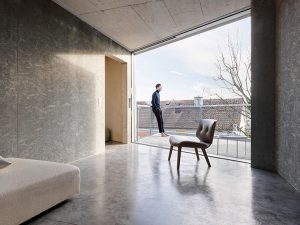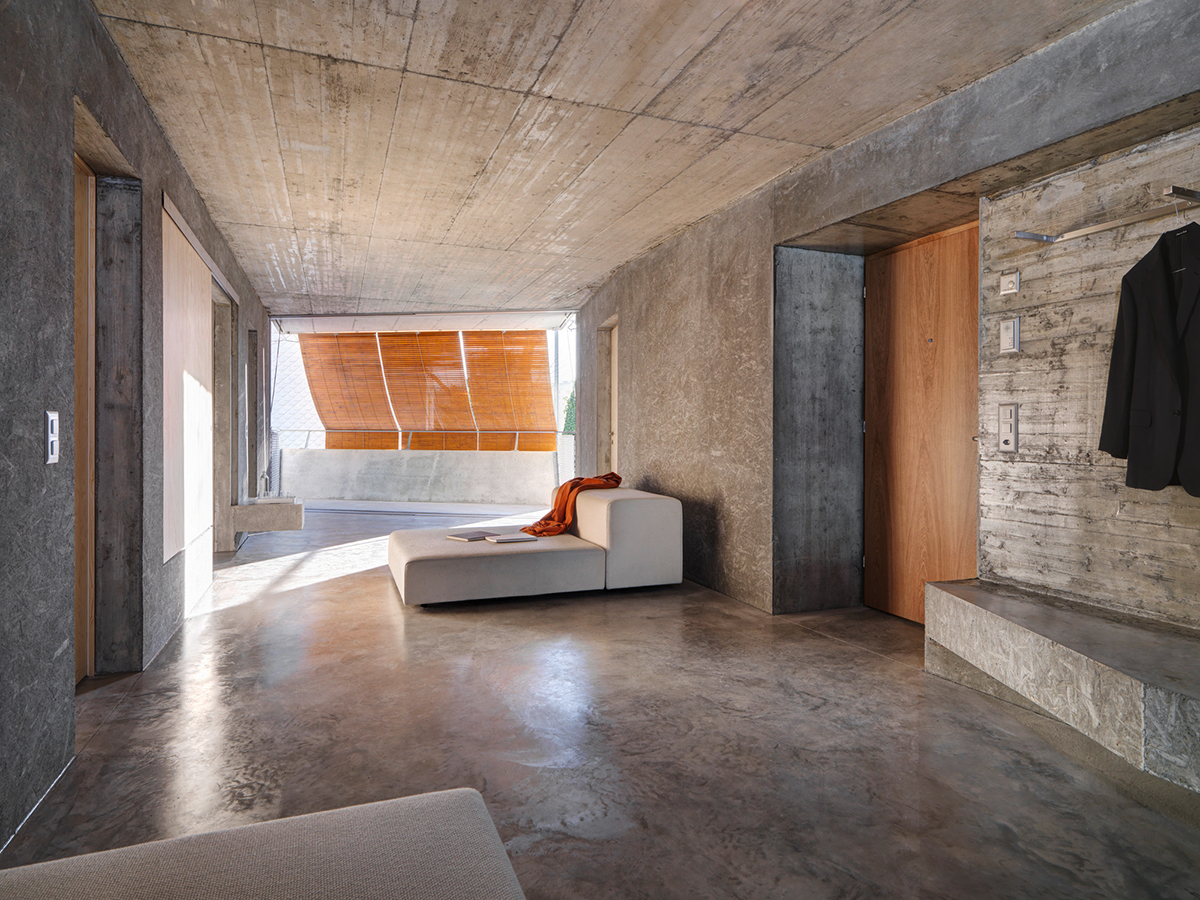Swiss architecture studio Gus Wüstemann was commissioned by The Baechi Foundation to build a housing block in Zurich with the aim of offering affordable housing with a high quality of living based on the provision of ample natural light, privacy and generosity of space. The monolithic block is surrounded by 1950s housing in the suburb of Albisrieden and contains nine apartments.

Living areas of each apartment are lined on both sides by sliding glass doors that can be retracted to open the rooms up to the open air. Spaces are connected by cantilevered concrete balconies or terraces that are protected from the sun and unwanted overlooking by slatted roller blinds.
Morphologically the structure is a solid concrete block, organically formed, from which two courtyards were cut out. In these courtyards, the living spaces float like bridges, from the morning sun to the evening sun. A continuous space that topographically creates the feeling that the living space is an exterior space – and not an interior space filled up with the housing program.
To reduce costs, the budget was focused on a couple of key interventions that define the overall quality of space: the sliding windows and the inclusion of built-in floating benches in the living areas.

Gus Wüstemann described the cast-concrete interiors as a form of topography that defines the spaces and incorporates functional elements such as the benches and wardrobes. Throughout the block concrete floors flow throughout the living spaces, bathrooms and into the bedrooms, where they contrast with an area floored with wood to give it a more intimate feel.
Wood is used for details such as windows frames, doors and kitchen units, which incorporate a fold-out surface that provides extra worktop space. In the three-bedroom apartments, a large sliding door that purposely does not touch the ground separates the bathroom from the common living space. A smaller concrete bench projects from the wall just outside the bathroom.











